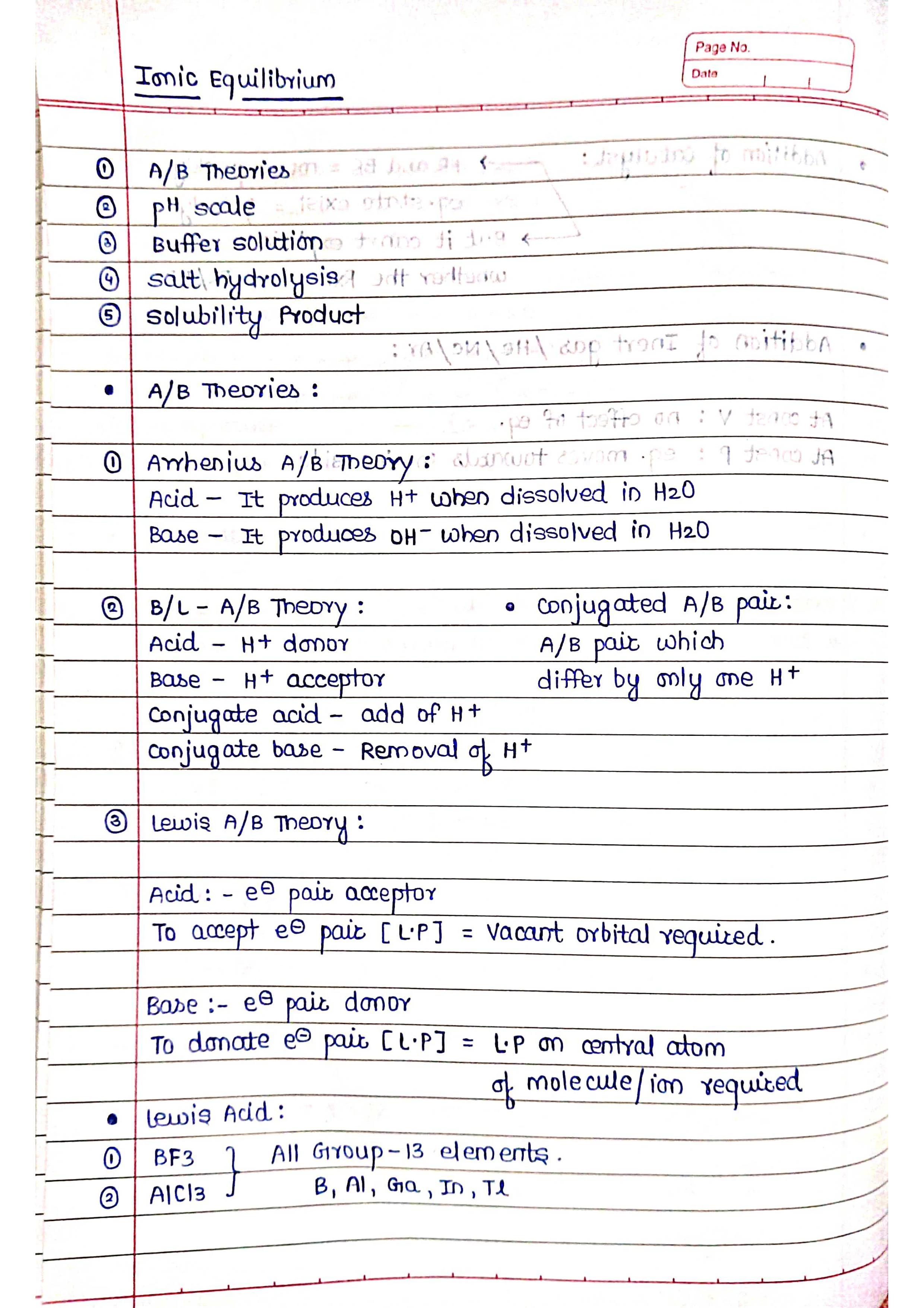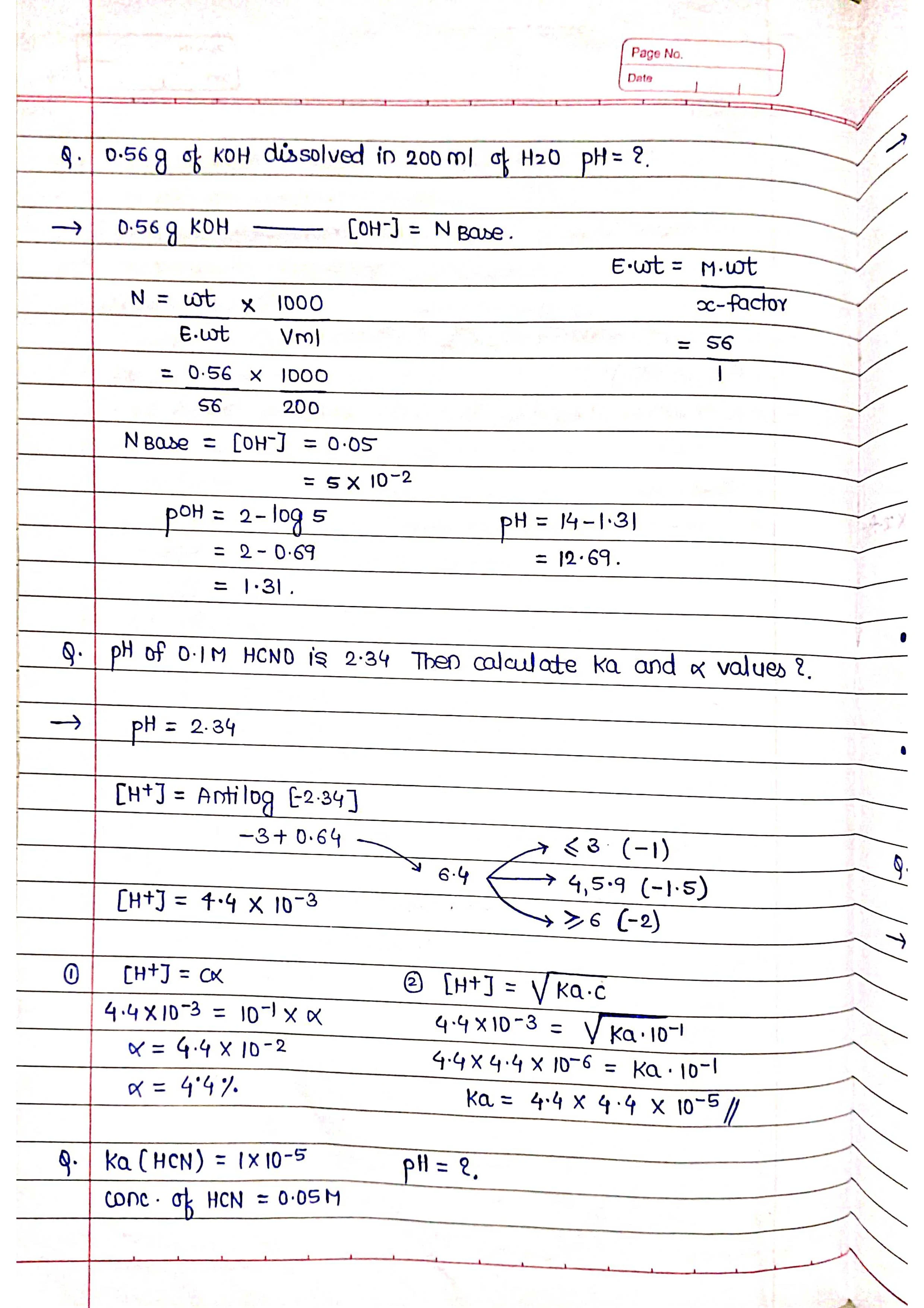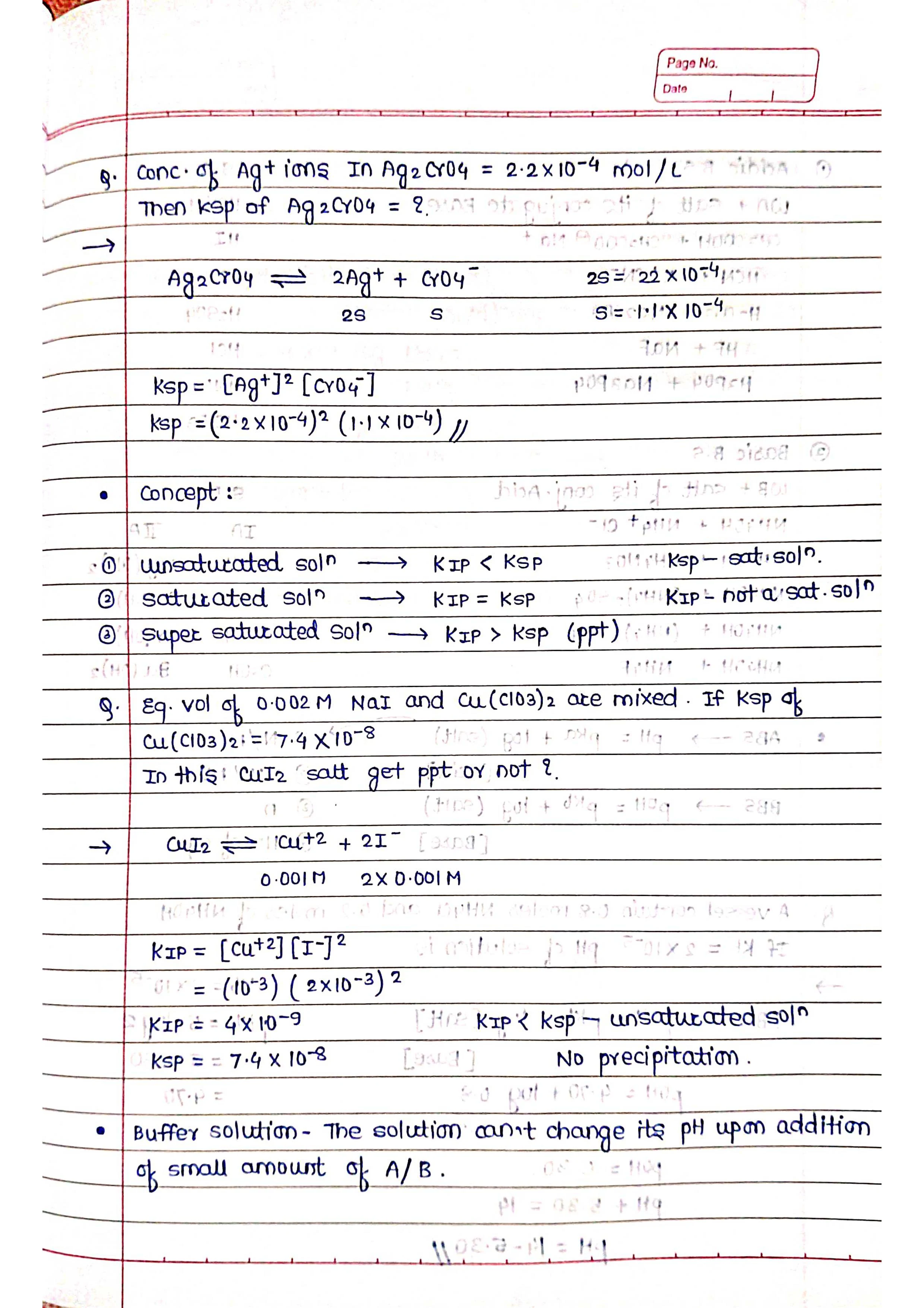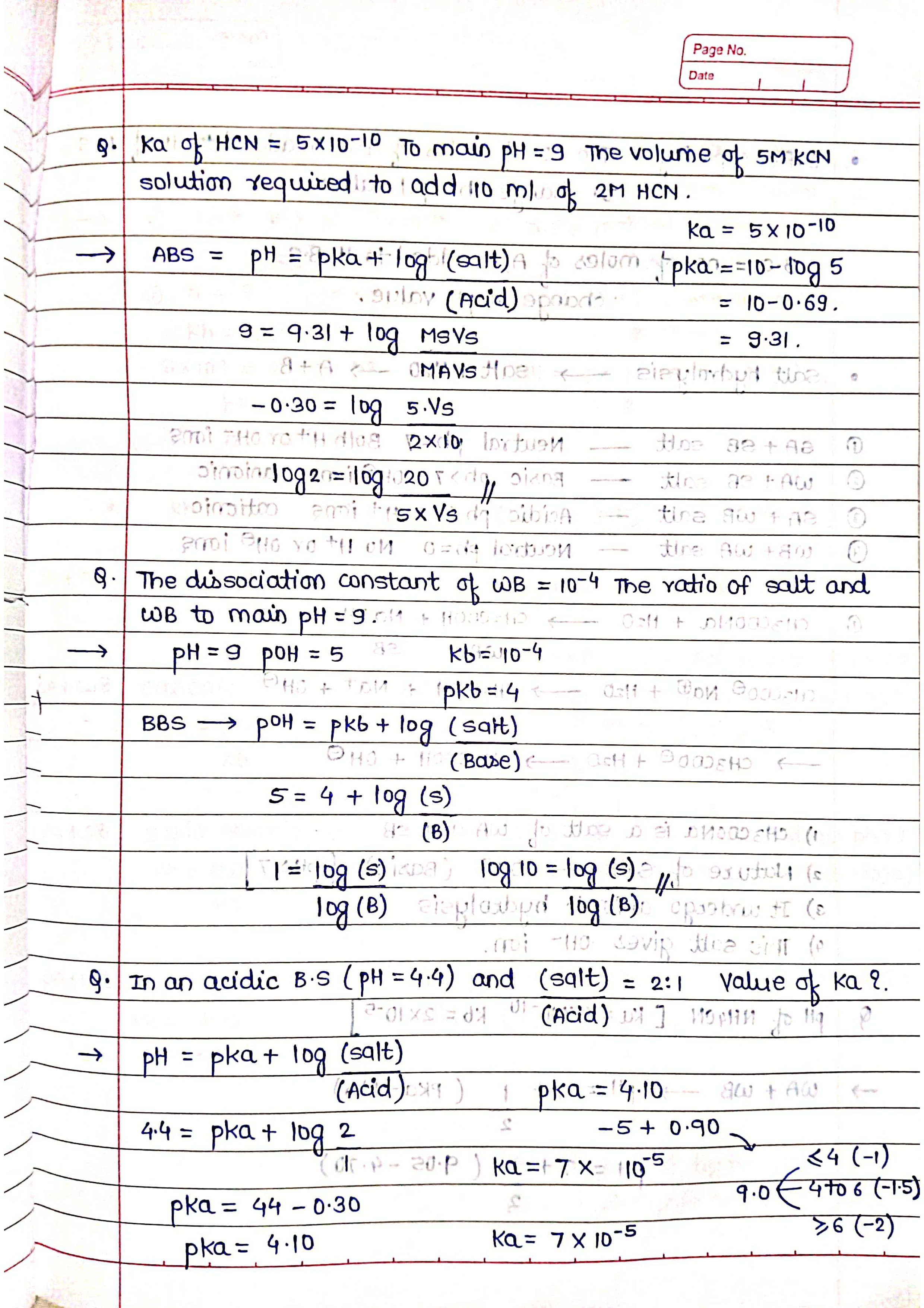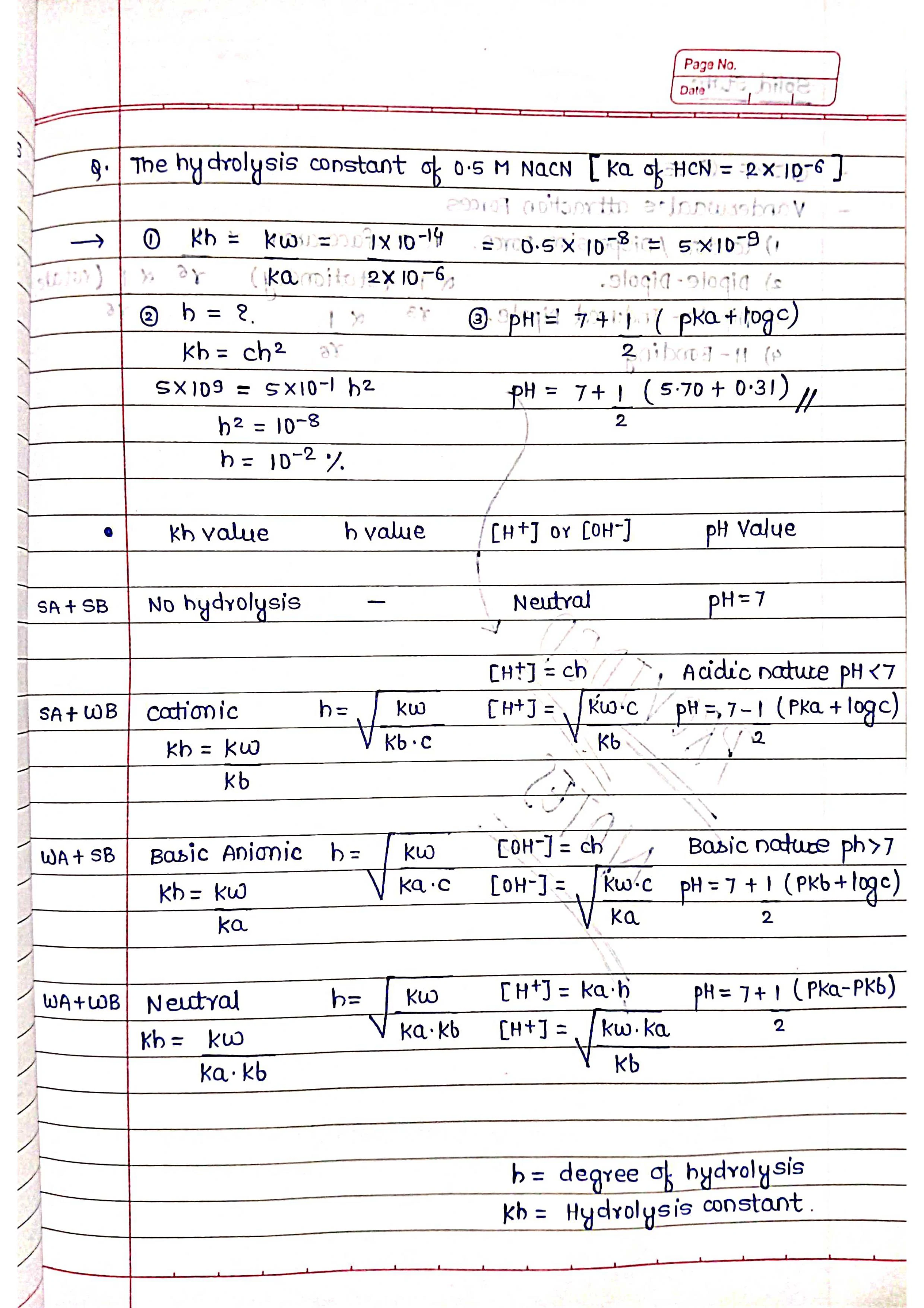Ionic equilibrium is a fundamental concept in chemistry that describes the dynamic state of a reversible reaction in solution, where the rates of the forward and backward reactions are equal. In simpler terms, it's a tug-of-war between the formation and dissociation of ions in a solution.
Ionic Equilibrium - Key points to remember
➭ Electrolytes: Ionic equilibrium primarily deals with electrolytes, substances that dissociate into ions in solution and conduct electricity. Examples include acids, bases, and salts.
➭ Reversible reactions: The system involves a reversible chemical reaction, meaning the products can react back to form the reactants, and vice versa.
➭ Dynamic equilibrium: At equilibrium, the forward and backward reaction rates are equal, but the individual reactions don't stop. They continue at the same pace, maintaining a constant concentration of reactants and products.
➭ Equilibrium constant (Kc): This value represents the ratio of the product ion concentrations to the reactant ion concentrations at equilibrium. It remains constant at a given temperature.
Factors affecting ionic equilibrium:
➭ Concentration: Changes in the concentration of reactants or products can shift the equilibrium position according to Le Chatelier's principle. Adding more reactants pushes the equilibrium towards product formation, while adding more products favors the reverse reaction.
➭ Temperature: Increasing temperature generally favors the endothermic reaction (the one that absorbs heat). Conversely, decreasing temperature favors the exothermic reaction (the one that releases heat).
➭ Pressure: In systems involving gases, changes in pressure can affect the equilibrium position. Increasing pressure favors the side with fewer gas molecules.
➭ Common ion effect: Adding a common ion (an ion already present in the equilibrium mixture) suppresses the dissociation of the weak electrolyte according to Le Chatelier's principle.
Applications of ionic equilibrium
- Understanding the pH of solutions and buffer systems.
- Predicting the solubility of salts.
- Controlling reaction yields in chemical processes.
- Developing separation techniques for ions.
Ionic Equilibrium - Further exploration
➭ Ionic product of water (Kw): This value represents the product of the concentrations of H+ and OH- ions in pure water and plays a crucial role in understanding acid-base equilibria.
➭ Hydrolysis of salts: Certain salts react with water to produce acidic or basic solutions due to the partial dissociation of their ions.
➭ Buffers: Buffer solutions resist changes in pH by maintaining a relatively constant concentration of H+ and OH- ions through the equilibrium between a weak acid and its conjugate base.
Chemistry Short Notes 📚⌛
1. Some Basic Concepts of Chemistry Short Notes 📚
2. Atomic Structure — Chemistry Short Notes 📚
3. Periodic table — Chemistry Short Notes 📚
4. Chemical Bonding — Chemistry Short Notes 📚
5. States of matter — Chemistry Short Notes 📚
6. Thermodynamics — Chemistry Short Notes 📚
7. Chemical Equilibrium — Chemistry Short Notes 📚
8. P-Block Elements 1 - Chemistry Short Notes 📚
9. Redox Reaction — Chemistry Short Notes 📚
10. Hydrogen — Chemistry Short Notes 📚
11. S-Block Elements - Chemistry Short Notes 📚


![Ionic Equilibrium - Chemistry Short Handwritten Handwritten Notes [PDF]📚 Ionic Equilibrium - Chemistry Short Handwritten Handwritten Notes [PDF]📚](https://blogger.googleusercontent.com/img/b/R29vZ2xl/AVvXsEii6IeVGDUorsD3AjYZPqqI1s99YKpZylJTbT0v_2axYDWJHwBovtegRi4yzZWEYOFozRkeQHqCNFL0leO6eoUSSkxVIGNoWNC_Fb8sVuFx9HwWSvMf4yeELwkEj1_5g7Av0xapn-n96hFgOMwERliljeJpWk6U8lOHsohEmXsjRlopcoWemj8Cht3V47I/s16000-rw/Ionic%20Equilibrium%20-%20Chemistry%20Short%20Handwritten%20Handwritten%20Notes%20%5BPDF%5D%F0%9F%93%9A.jpg)
